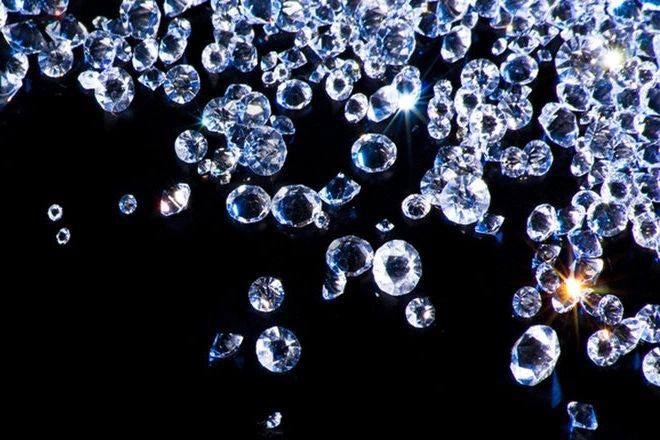There are more diamonds buried deep in the Earth’s crust than we ever thought possible, new research has revealed, but accessing that sparkling hoard would take technology far beyond what we currently have at our disposal.

A paper published in the journal Geochemistry, Geophysics, Geosystems suggests that up to a quadrillion tons of the precious gems could be encased in the very deepest roots of Earth’s continents; part of a thick, immovable layer of rock known as cratons.
WATCH: Drone video takes us inside the crater at Hawaii’s Kilauea’s volcano

“We can’t get at them, but still, there is much more diamond there than we have ever thought before.”
So how deep are we talking? Between 150 and 240 kilometres beneath the surface, deep enough to stretch into the Earth’s upper mantle. For some perspective, the deepest mine in the world (located in South Africa) only goes four kilometres down.
Reaching this enormous cache of diamonds would require technology that only exists in Hollywood’s imagination.
READ MORE: You couldn’t see it or feel it, but Vancouver Island just moved away from the coast
Because they couldn’t actually dig down and bring back a sample of the cratonic rock, the researchers used sound waves to arrive at their diamond-content estimate. In studying how fast or slow these waves (triggered by earthquakes, tsunamis, explosions, and other ground-shaking sources) move through the Earth, geologists are able to figure out what type of rock the waves are passing through.
When the waves moved through the roots of the ancient cratons, the researchers noticed that they sped up considerably more than expected.
WATCH: Pink Star diamond becomes world’s most expensive gem (again)

To explain those spikes, the researchers created a three-dimensional model and sent virtual sound waves travelling through virtual rocks, made up of different combinations of minerals. The only model that produced speeds that lined up with what they were seeing in the real world was the one that assumed the massive cratonic roots were made up of 1 to 2 per cent diamond, in addition to peridotite and eclogite.
“It’s circumstantial evidence, but we’ve pieced it all together,” Faul said. “We went through all the different possibilities, from every angle, and this is the only one that’s left as a reasonable explanation.”
Diamonds are just a solid form of carbon, and in spite of their high (albeit largely artificial) value here on Earth, they’re extremely common in the cosmos. Carbon remains one of the most common elements in the universe, and even within our own solar system, research suggests diamonds may rain from the skies on ice giants like Neptune.
- High benzene levels detected near Ontario First Nation for weeks, residents report sickness
- Meta says you can’t turn off its new AI tool on Facebook, Instagram
- Enter at your own risk: New home security camera aims paintballs at intruders
- Beijing orders Apple to pull WhatsApp, Threads from its China app store




Comments